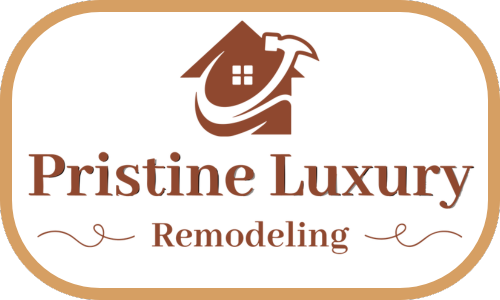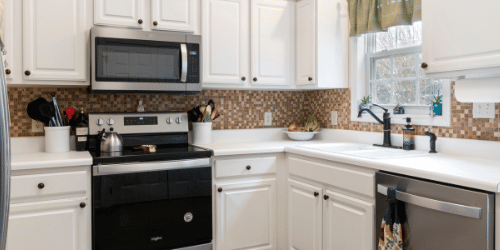Choosing the right cabinetry and hardware is a critical step in any home renovation or new build. Not only does it impact the overall aesthetics, but it also affects functionality. In this blog post, we’ll explore key considerations for selecting cabinetry and hardware that enhance both style and practicality.
The right hardware can make or break your kitchen or bathroom design. Pay attention to details and consider a mix of materials and finishes for a timeless look.
Understanding Cabinet Hardware
Knobs vs Pulls
Knobs and pulls serve different aesthetic and functional roles in cabinetry. Knobs are typically smaller and used on doors and smaller drawers, offering a simple, elegant look ideal for traditional or classic styles. Pulls, being larger and providing a better grip, are suitable for both doors and drawers, especially heavier ones, making them a practical choice for modern or contemporary designs where a streamlined, bold appearance is desired. For example, a farmhouse kitchen might feature round ceramic knobs on cabinet doors paired with rustic metal pulls on drawers for a cohesive vintage look, while a modern kitchen could use long, stainless steel pulls to enhance flat-panel cabinets’ sleek lines. The choice between knobs and pulls depends on the cabinet style and the specific functional needs of the space.
Placement Matters
Correct cabinet hardware placement is crucial for both aesthetics and usability. Properly placed knobs and pulls not only enhance the overall look of the cabinetry but also make it more functional and comfortable to use. For example, knobs are typically installed about 2.5 to 3 inches from the corner of the door or drawer, while pulls are often centered on the drawer fronts and positioned horizontally on upper cabinets and vertically on lower cabinets. Consistent alignment and spacing are key to achieving a balanced and cohesive appearance. A good tip is to use a template or jig for drilling holes to ensure uniform placement. Additionally, aligning hardware with the lines of the cabinetry or other architectural elements in the room can create a harmonious and intentional design.
Material and Finish Options
Cabinet hardware comes in various materials like brass, chrome, and nickel, with finishes ranging from matte to polished, each influencing the design’s aesthetic. Brass adds warmth and a luxurious feel, while chrome and polished nickel offer a sleek, modern look. Matte finishes provide a subtle elegance suitable for both traditional and contemporary spaces. When mixing metals, aim for a balanced look by choosing a dominant metal for most hardware and incorporating a secondary metal in accents like light fixtures or faucets.
Customization and Special Features
Pull-Out Shelves and Drawers
Pull-out shelves and drawers offer numerous benefits, particularly in enhancing accessibility and organization in kitchens, bathrooms, and other storage areas. They make it easy to reach items stored at the back of cabinets, eliminating the need to bend or stretch awkwardly. This feature is especially useful for individuals with mobility issues or those who want to maximize their storage space efficiently. Pull-out shelves and drawers also help keep items organized, as they allow for better visibility and easier access, reducing the need to rummage through cluttered spaces. Innovative designs include soft-close mechanisms for smooth and quiet operation, tiered pull-out shelves for separating and organizing different items, and pull-out spice racks or pantry shelves that make use of narrow spaces.
Soft-Close Mechanisms
Soft-close hinges and drawer slides are important features for modern cabinetry, offering both functional and protective benefits. They prevent doors and drawers from slamming shut, which reduces noise and minimizes the wear and tear on the cabinetry. This gentle closing mechanism not only enhances the user experience by providing a smoother operation but also extends the life of the cabinets by preventing damage from repeated impacts. The cushioning effect of soft-close systems protects the structural integrity of doors and drawers, keeping them aligned and functional for longer. For reliable performance, brands like Blum, Salice, and Grass are highly recommended, as they offer high-quality soft-close hinges and drawer slides known for their durability and smooth operation.
Built-In Lighting
Under-cabinet lighting enhances both the functionality and aesthetics of kitchens and workspaces by providing focused illumination on countertops. Options like LED strips, puck lights, and linear fixtures offer unique benefits: LED strips provide continuous, customizable lighting; puck lights deliver focused, accent lighting; and linear fixtures offer consistent, traditional lighting. For a well-lit and inviting space, consider layering different types of lights, using LED strips for general task lighting and puck lights for accenting specific areas. Opt for dimmable fixtures to adjust light intensity and choose appropriate color temperatures to set the desired mood. Proper placement, such as positioning lights towards the front edge of cabinets, prevents shadows and ensures effective lighting.
Mixing Styles and Finishes
Eclectic Combinations
Encourage readers to think beyond uniformity and explore the creative possibilities of mixing styles in their kitchens and bathrooms. For example, pairing sleek, modern cabinets with vintage hardware can create a unique and visually interesting contrast that adds character to the space. This blend of styles allows for personal expression and can make a room feel more inviting and distinctive. To achieve a harmonious mix, consider balancing elements: if the cabinets are minimalist, opt for ornate hardware to add a touch of warmth and detail. Alternatively, if the cabinetry is richly detailed, simpler, more contemporary hardware can provide a refreshing counterbalance. It’s also important to maintain a cohesive color palette and consistent finish quality to tie the different elements together seamlessly.
Coordinating with Appliances
When choosing cabinet hardware, it’s crucial to ensure it complements your appliances for a cohesive look. Stainless steel appliances are well-matched with hardware in similar finishes, such as stainless steel or brushed nickel, creating a sleek, modern appearance. Black appliances look striking with matte black or dark-colored hardware, enhancing the contemporary vibe. For custom panel appliances that blend seamlessly with cabinetry, selecting hardware that mirrors or complements the cabinet finishes helps maintain a unified design.
Unconventional Materials
Exploring unique materials for cabinet hardware, such as leather, glass, and ceramic, can infuse your space with distinctive character and style. Leather hardware adds warmth and texture, ideal for rustic or eclectic designs, while glass hardware provides an elegant, translucent touch suitable for both traditional and contemporary settings. Ceramic hardware, with its variety of colors and patterns, adds a playful or artistic element, perfect for a whimsical or artisanal look. Using these materials creatively allows you to personalize your space and make a statement.
Common Mistakes to Avoid
Overusing Black Hardware
An all-black approach in cabinet hardware and fixtures can be problematic as it may create a uniform, heavy look that lacks visual interest and depth. While black can provide a sleek, modern aesthetic, it might make the space feel monochromatic and flat if not balanced properly. To address this, consider incorporating contrasting elements such as metallic finishes like brass or chrome to add visual interest and dimension. Mixing in lighter or neutral tones for cabinetry or countertops can also help break up the dark palette and create a more dynamic, inviting environment. For instance, a kitchen that initially appears too uniform with all-black elements can be transformed by combining matte black hardware with brass accents and lighter-colored countertops, resulting in a balanced and visually engaging design.
Mixing Metals
Mixing metals in interior design is a popular trend that adds depth and sophistication to a space. To achieve successful combinations, start by choosing a dominant metal, such as brass or chrome, for key elements like cabinet hardware or fixtures, and use it consistently. Introduce a secondary metal, such as nickel or matte black, in smaller accents to create contrast and visual interest. Ensure the metals have compatible tones and finishes—cooler metals pair well together, while warmer metals can create a rich, cohesive look. Encourage experimentation with different metal combinations while maintaining balance by limiting the number of metals used and ensuring consistency in their finishes.
Installation Tips
Proper hardware installation is crucial for achieving a polished and professional look in your cabinetry. An informative tutorial on correct hardware installation can guide you through the steps necessary to ensure precise alignment and secure attachment, which ultimately contributes to the overall aesthetic and functionality of your space. Emphasizing the importance of correct installation, the tutorial will help prevent issues like misaligned hardware or loose fittings that can detract from the finished appearance. For a seamless and attractive result, following best practices in hardware installation ensures that every detail is well-executed, enhancing both the visual appeal and usability of your cabinets.
Answering Common Questions
Q1 How do I choose the right size for my cabinet hardware?
A1 Consider the cabinet size, style, and your personal preference. Test different sizes before committing.
Q2 Is brass still in style?
A2 Yes, brass remains a timeless finish. Opt for a less shiny version for a modern look.
Q3 Can I mix different hardware finishes?
A3 Absolutely! Mixing metals adds depth and interest. Just ensure consistency in repetition.
The Impact of Material Choice
Discuss how material selection affects durability, maintenance, and overall aesthetics and highlight the influence of hardware on the entire room’s design.
Seeking Expert Advice
Encourage readers to consult with professionals for personalized recommendations and remind them that investing in quality hardware pays off in the long run.
Conclusion
In the world of home design, cabinetry and hardware are crucial not just for functionality but also as reflections of your style and personality. As you embark on your remodeling journey, aim to balance aesthetics and practicality by choosing hardware that enhances both beauty and usability. Pay close attention to details such as placement, material, and finish, as these small adjustments can significantly impact the overall look. Customize wisely by incorporating features like pull-out shelves, soft-close mechanisms, and built-in lighting to enhance convenience and extend the longevity of your cabinetry. Don’t hesitate to mix and match styles and finishes to create a unique, personalized look. Finally, seek expert advice or consult reputable resources to ensure you make informed decisions that will achieve a polished and cohesive design.
Visit us at Pristine Luxury Remodeling
For more information and personalized guidance visit us at Pristine Luxury Remodeling, We specialize in providing exceptional remodeling services that elevate your space into a masterpiece of luxury.







